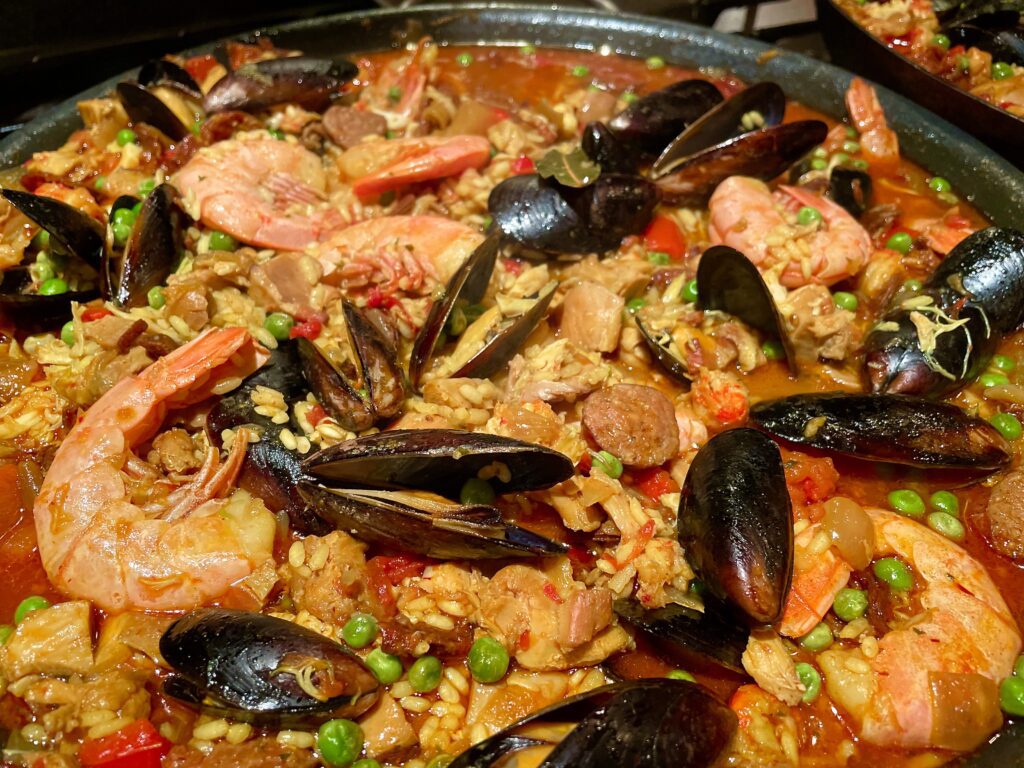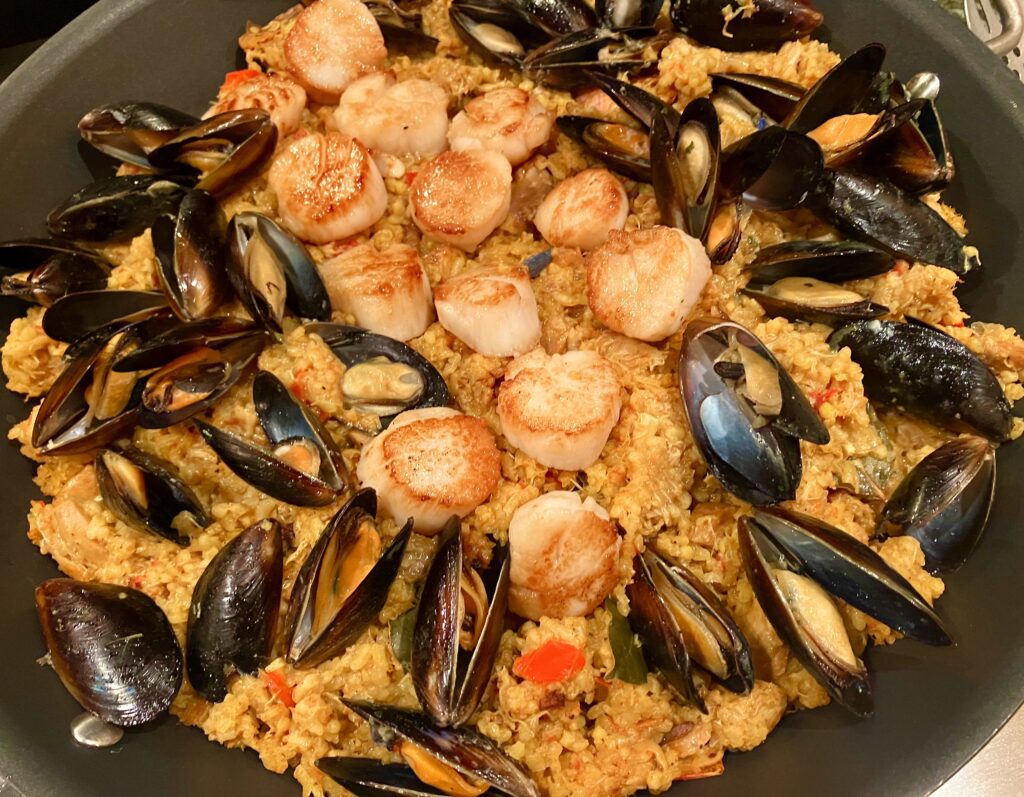Paella is the signature meal of Spain, a national pride, and yet almost no one fully agrees on how exactly it should be made. It is a controversial meal for many reasons… starting with the simple fact that it is a huge shallow pan loaded down with complex and expensive ingredients which completely vary from home to home, town to town, restaurant to restaurant, and from region to region in Spain. Paella in Madrid is very different from that in Seville. But at the same time, like Bouillabaisse from France, Paella is a classic meal so identified with the soul of the country that it naturally comes laden with emotion, memory, tradition, pride, and a sensory longing for the authenticity of the time and place of one’s upbringing.
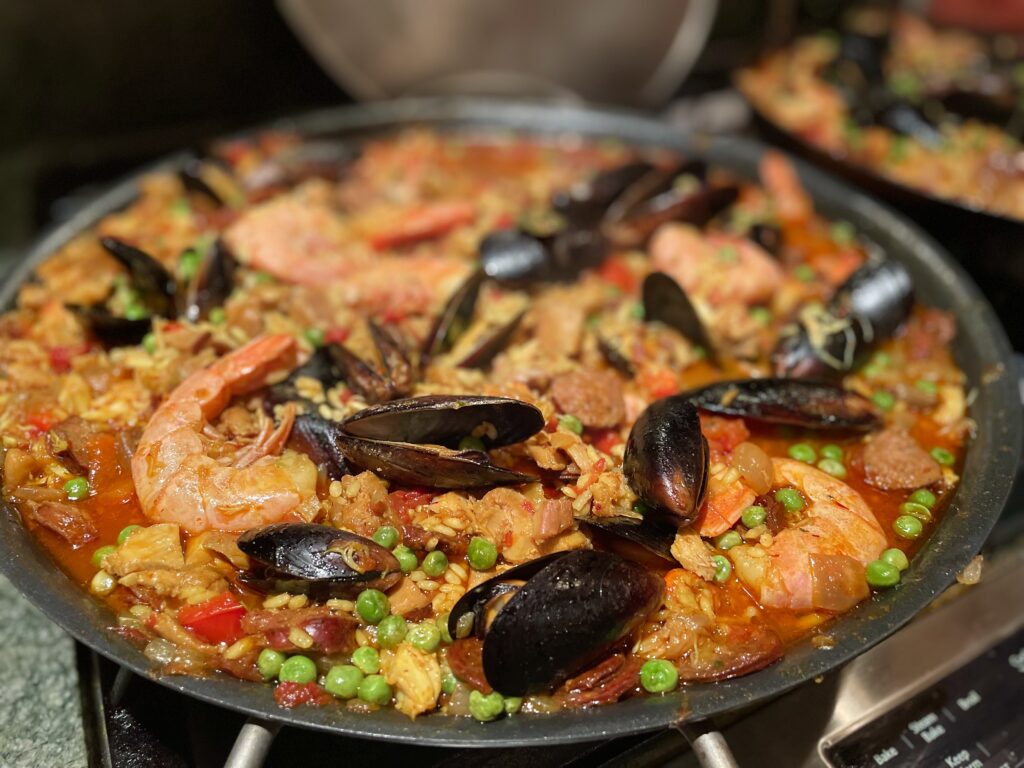
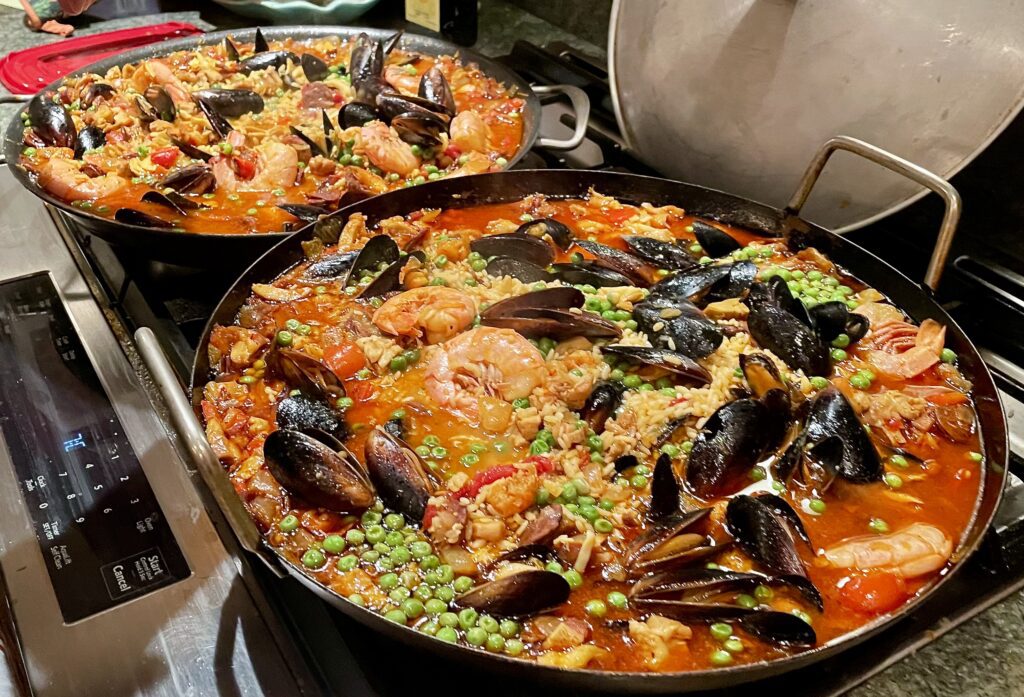
So when Americans like us dare to make Paella, there is naturally a rolling of the eyes by those from Spain. That’s understandable. But the truth is that Paella has become such a commonly ordered meal by tourists in Spain that chefs there often joke that it’s the only meal they make with a microwave. They make vast quantities of tourist style Paella and simply warm it up when it’s ordered, which is constantly. That’s one of the reasons many tourists come back disappointed by the Paella they got in Spain. It’s sort of like a New Orleans jazz band, after the 10,000th time that tourists ask them to play And the Saints Come Marching In, it gets kind of stale.
The other reason Paella varies so much in quality is that the ingredients are expensive and not easy to acquire. Saffron, just one ingredient, is the most expensive spice in the world, made from a crocus flower grown in Spain and Iran. Each flower has three stigmas, and it takes about 13,000 stigmas, harvested by hand, dried from 4,300 flowers, to make one ounce of saffron. For a Spanish restaurant to include all of the ingredients that are in our recipe, in the volume necessary for a crowd of diners, they would have to charge so much per meal that very few could afford to order it. It’s just too difficult for a restaurant to acquire all these ingredients in every season and in every region of Spain. And since it is essentially a rice meal, any errors made means the rice is mush and the meal is ruined. And even if they accomplished all that, the casual tourist would be very likely overwhelmed by the flavors and the intensity of this sumptuous meal. So to take on this lavish meal you must be like Don Quixote and be willing to let the Spanish cooks stand with arms folded as you tilt at windmills.
Paella was created by hunters in the woods and fields, and by fisherman along the sea. It was a simple authentic meal, made while camping over open fires, the smoke becoming an integral part of the flavors, as well as the local natural ingredients. So for us, to reveal the real heart and soul of this meal, we felt that Paella should taste like wildness, using meats and spices that are smoked, and at the same time, married to the tangy briny fruits of the sea. For all passionate home cooks, Paella is spectacular for festive gatherings of family and friends.
Here is the paradox – like Bouillabaisse, when Paella was cooked along a vast coast for generations, by hungry fishermen, they generally used the parts that would be hard to sell, the small fish and eels which were considered scrap. At the same time, when made by hunters in the wilds of the interior of Spain, they used rabbit, wild boar, game birds and snails for their version of Paella. This is why all of the many regions of Spain have such different versions, they simply used what was at hand.
All over Spain, Paella has always been a family tradition, a shared connection to ancient times. It was considered part of their heritage to create it in their traditional way, and then to feast. To remember the good times was to remember Paella.
Like Gumbo Ya Ya, when we make Paella, we are drawn to the more complex and contrasting flavors of a mixture of the land and the sea. Somehow, the blending of the strong flavors of the briny ocean combines in an almost magical way with those from the hunt… the slamming together of clams, crabs, shrimp and mussels bumping and grinding in the massive Paella pan with game birds, chicken, rabbit, and spicy sausages. All of this is held together with rice and saffron and tomatoes… like a cauldron of spicy broth from all Spanish regions. This more challenging version of Paella has become the Holy Grail of many cooks from around the world, who take on the making of this classic meal.
As always, we hope that those who make and share our version are transported in some way to this ancient sun drenched and beautiful country of Spain… which we love. It is a land and a people who are full of life.
Ingredients
6 dozen fresh live mussels
1 pound of langoustines or crawfish (or scallops, just for fun!)
10 chicken thighs, free range and air chilled, skin on or off and bone in (you can also use duck/pheasant/Cornish Hens/or any game bird)
2 big sweet onions, chopped
2 shallots, diced
1 entire head of garlic, each clove crushed
1 28 oz can of plum tomatoes from Italy (we use tomatoes from San Marzano, Italy)
1 pound crab meat
1 pound shrimp, preferably wild caught, in shells (we use Gulf or Argentinian Red shrimp)
2 large pinches of Saffron
2 tablespoons of dried hot peppers or 4 Serrano or Jalapeño peppers
1 tablespoon of smoked hot Spanish paprika
6 bay leaves
4 cups of short grain white rice, uncooked. Note: the most authentic are Arborio or Bomba rice from Spain because it absorbs more of the flavorful liquids (available on Amazon)
1 pound of spicy sausage, either pork/turkey/chicken/Andouille or Spanish chorizo
3/4 pound of smoked bacon, fried and diced
2 big red bell peppers, chopped
12 oz frozen baby peas
4 cups chicken broth, we boil down the bones from a whole roasted chicken (5 cups if you use Bomba rice)
4 cups of shellfish broth, clam/lobster/crab (5 cups if you use Bomba rice)
1/4 cup Spanish olive oil
1/4 cup duck fat for its wildness and to replaced the fats lost removing the chicken skin
Note: you will need 2 full size Paella pans, with lids, or a large shallow pan with lid.
Cooking
Salt and pepper both sides of the chicken and sprinkle on the paprika in a light dusting. In a very large 14 to 15 inch fry pan, add the olive oil and duck fat, crush in the garlic, and slowly warm up the oil until the garlic melts in.
Add the chicken and slowly fry both sides, turning often. When the chicken is 3/4 done, remove and cover. When the chicken is cooled, de-bone all the meat, chop into pieces and set aside.
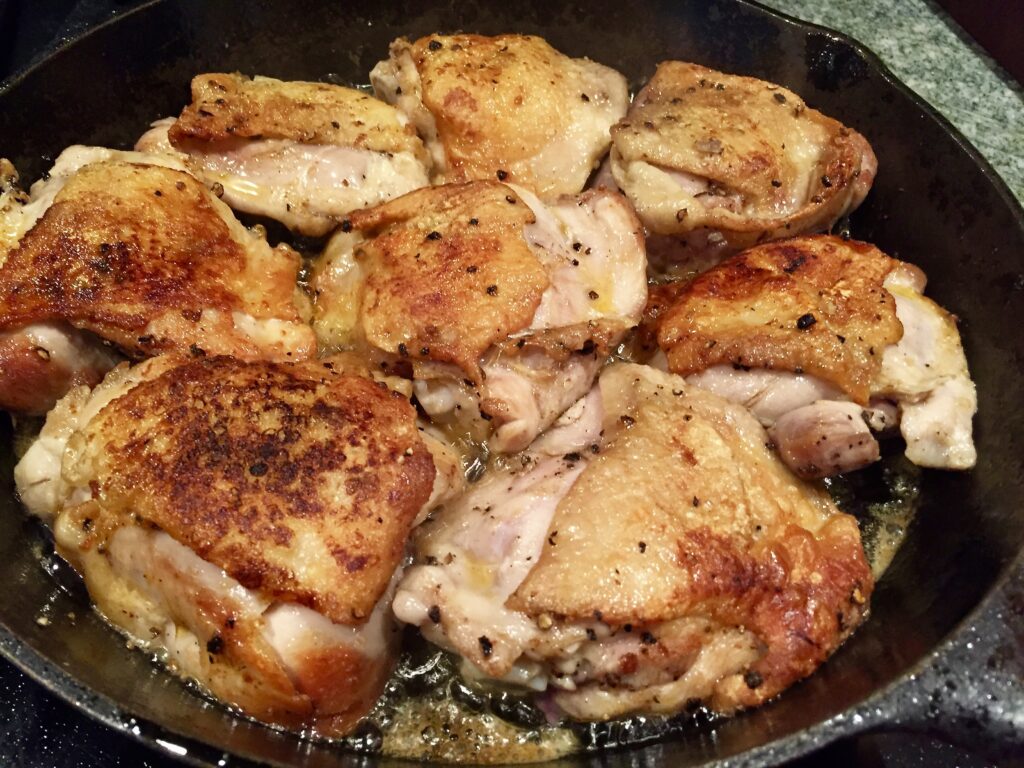

Gently fry the uncooked rice in the oils that remain in the pan until they are well coated with all the burnt bits, garlic and grease. Remove the rice and put aside. (Very important step, for maximum umami flavors in the rice.)
Pour the last of the olive oil in the same pan and fry the onions and peppers until the onions are opaque. Salt to taste.
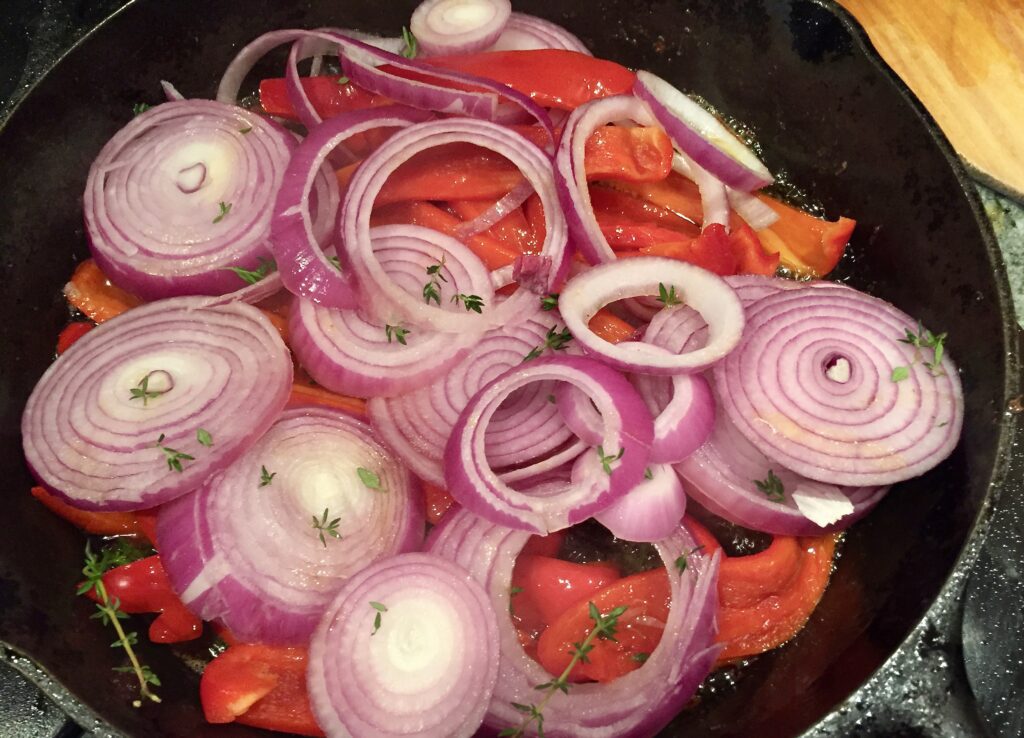

Add the shallots, sausage, chicken, and all meats and bacon. Pan fry at medium temperature until seared slightly.
Add the tomatoes, crushing by hand each plum tomato as added. Stir until mixed.
Now add saffron, hot peppers, bay leaves, shellfish broth, all seafood and heat until just warm… not cooked. Now separate all these ingredients into the two Paella pans equally.
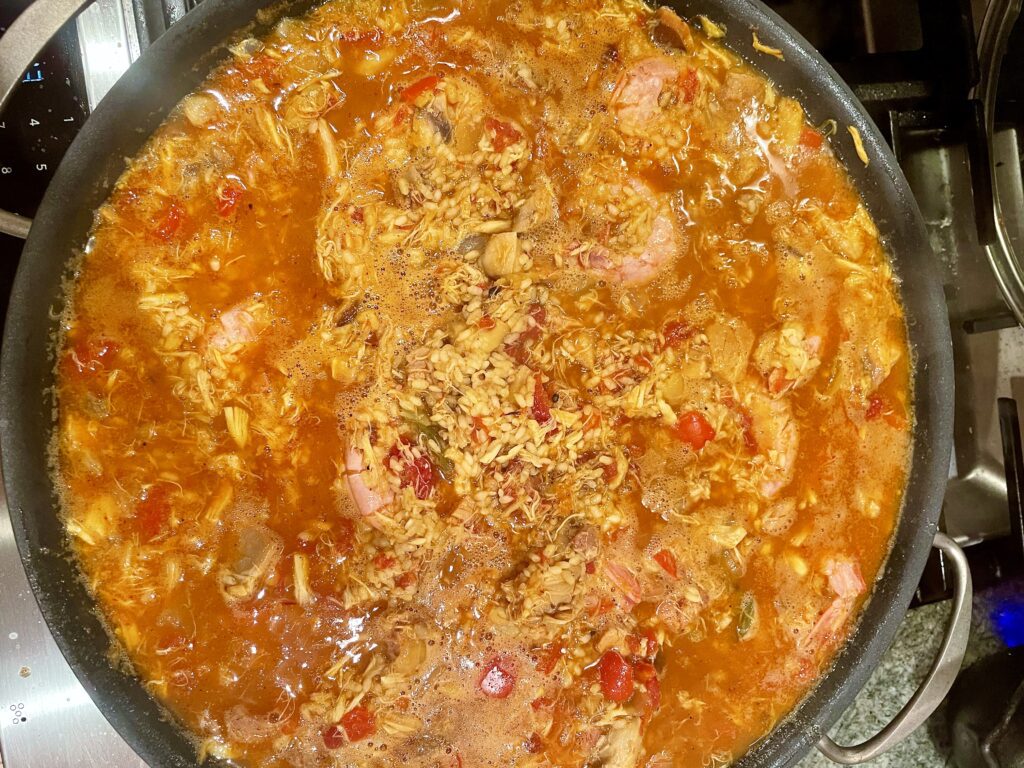

Add the rice and liquids (broth and tomato juice) equally to both pans, so the ratio is 2 cups liquid to 1 cup rice. Note: if you are using Bomba rice you should use 3 cups liquid to 1 cup rice.
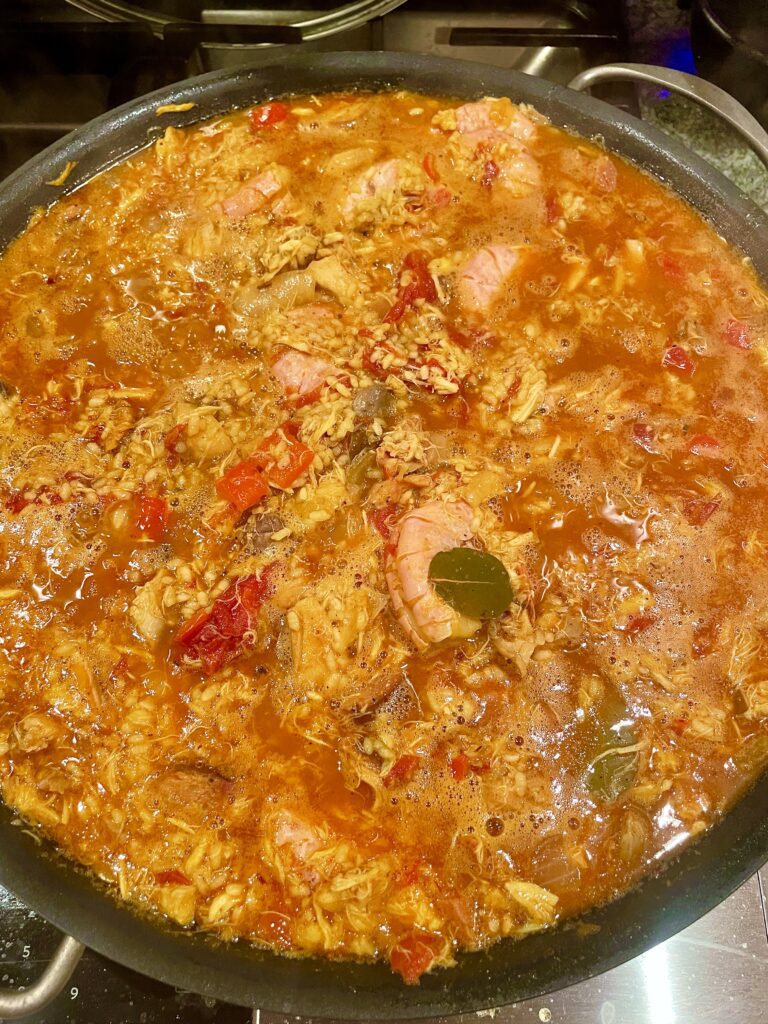

Add the mussels and peas on top of each. (If you have plenty of liquids and lots of heat, there is no need to use the cover. If you want to slow the process down to better time the serving, you can lower the heat and use the cover.) Simmer both pans about 12 minutes on medium, until the rice is barely al dente, remove from heat and serve immediately, since the rice will continue to cook in the hot pans.


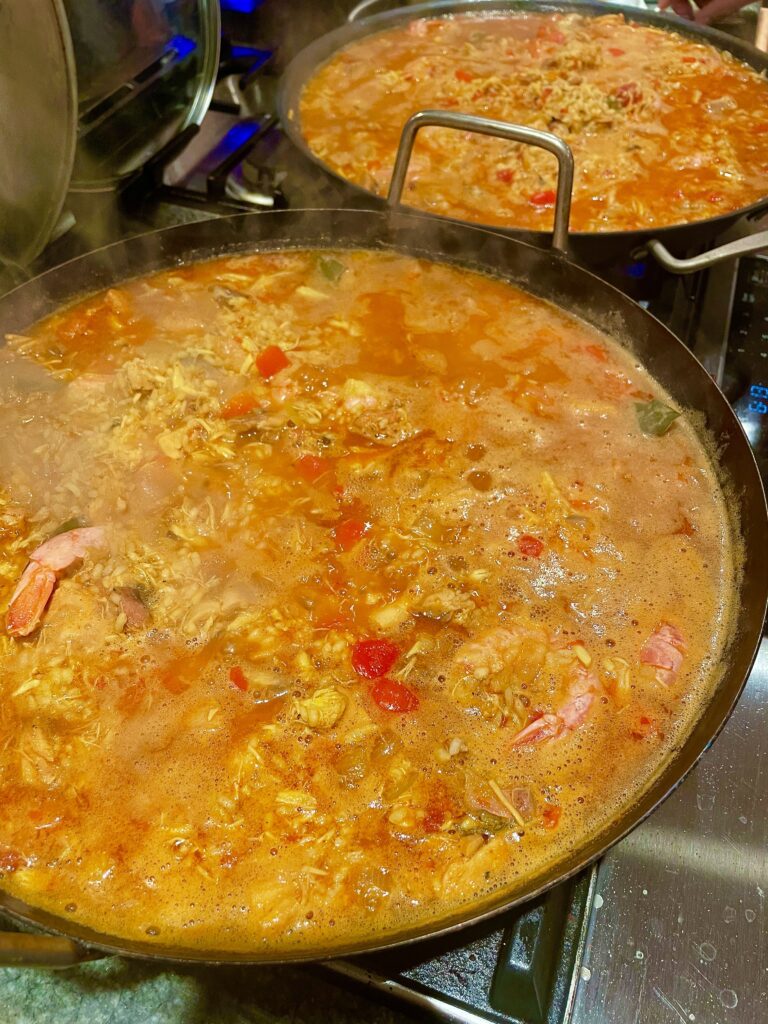

Serve from the Paella pans. This feast will easily feed 10 to 12 people, until they are in a food coma… with big grins… Paella in one hand, and a Sangria in the other.



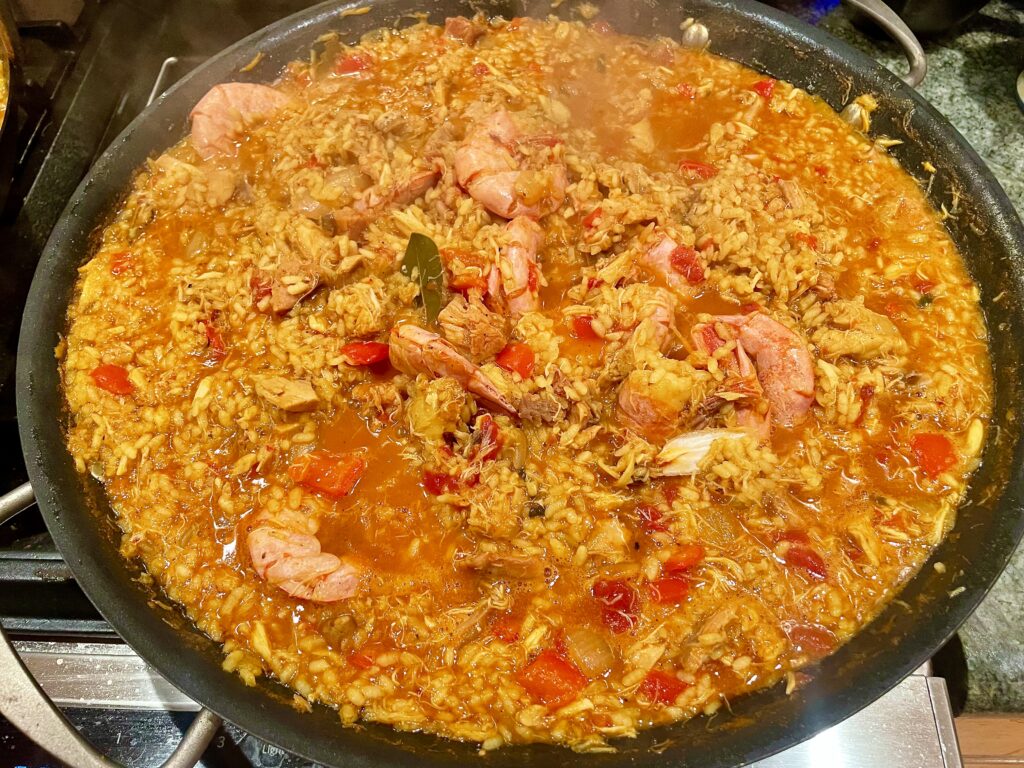

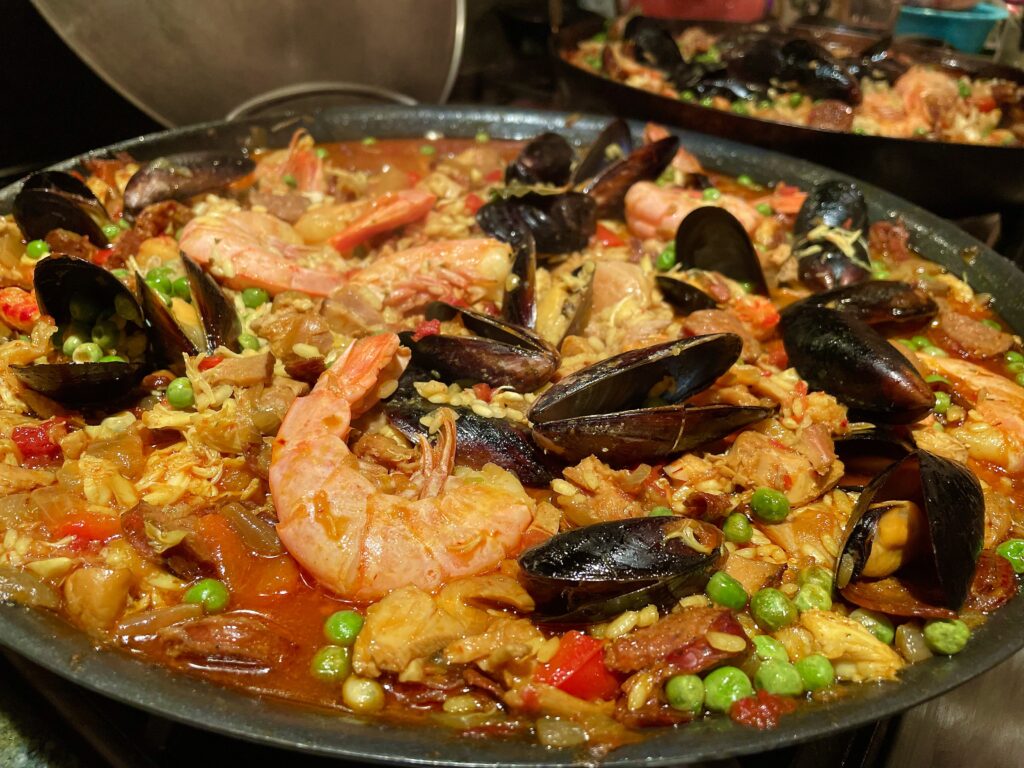

Simplicity is at the heart of Spanish cuisine, whether it’s tapas with cured hams thinly sliced or fresh seafood tossed in a pan with olive oil and garlic. We’ve found that to make authentic dishes from Spain you really have to make the effort to find the imported ingredients, and they are more and more available online and in specialty stores.
The unique flavors of Spain have a profound gravitas, like smoked paprika, chorizo, Piquillo peppers, cooked and marinated octopus and the finest dark flaming red saffron. For us, Spain is not so much a place but a way of life, and always a delightful feast.
